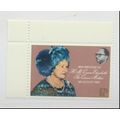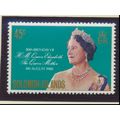Caravaggio - St. Jerome writing - art postcard - Malta
- Condition : Used
- Dispatch : 2 Days
- Brand : None
- ID# : 74332869
- Quantity : 1 item
- Views : 1129
- Location : United Kingdom

- Seller : justthebook (+1704)
- Barcode : None
- Start : Mon 03 Sep 2012 05:25:34 (EDT)
- Close : Run Until Sold
- Remain : Run Until Sold
Checks/Cheques
 for 1 item(s) edit
for 1 item(s) edit
Shipping Calculator
More Listings from This Seller view all
Seller's Description
- Art Postcard
- Work of art title: St. Jerome
- Artist (if known): Michelangelo Merisi da Caravaggio
- Media or other details: painting
- Publisher / Gallery: Mauritzio Urso / Museum of St. John's (Valetta, Malta)
- Postally used: no
- Stamp & postmark details (if relevant): na
- Size: modern (slightly larger)
- Notes & condition details:
NOTES:
Size: 'Modern' is usually around 6in x 4in / 'Old Standard' is usually around 5 1/2in x 3 1/2in. Larger sizes mentioned, but if you need to know the exact size please ask.
All postcards are not totally new and are pre-owned. It's inevitable that older cards may show signs of ageing and use, particularly sent through the post. Any faults other than normal ageing are noted.
Stock No.: A371
------------------------------------------------
Postage & Packing:
UK (incl. IOM, CI & BFPO): 99p
Europe: GBP 1.60
Rest of world (inc. USA etc): GBP 2.75
No additional charges for more than one postcard. You can buy as many postcards from me as you like and you will just pay the fee above once. (If buying postcards with other things such as books, please contact or wait for invoice before paying).
Payment Methods:
UK - PayPal, Cheque (from UK bank) or postal order
Outside UK: PayPal only please (unless otherwise indicated). NO non-UK currency checks or money orders (sorry).
NOTE: All postcards are sent in brand new stiffened envelopes which I have bought for the task. These are specially made to protect postcards and you may be able to re-use them. In addition there are other costs to sending so the above charge is not just for the stamp!
----------------------------------------------
Text from the free encyclopedia WIKIPEDIA may appear below to give a little background information:
*************
Michelangelo Merisi da Caravaggio (Italian pronunciation: [kara'vadd?o]; 29 September 1571 � 18 July 1610) was an Italian artist active in Rome, Naples, Malta, and Sicily between 1593 and 1610. His paintings, which combine a realistic observation of the human state, both physical and emotional, with a dramatic use of lighting, had a formative influence on the Baroque school of painting.[1]
Caravaggio trained as a painter in Milan under Simone Peterzano who had himself trained under Titian. In his early twenties Caravaggio moved to Rome where, during the late 16th and early 17th centuries, many huge new churches and palazzi were being built and paintings were needed to fill them. During the Counter-Reformation, the Roman Catholic Church searched for religious art with which to counter the threat of Protestantism, and for this task the artificial conventions of Mannerism, which had ruled art for almost a century, no longer seemed adequate.
Caravaggio's novelty was a radical naturalism that combined close physical observation with a dramatic, even theatrical, use of chiaroscuro. This came to be known as Tenebrism, the shift from light to dark with little intermediate value. He burst upon the Rome art scene in 1600 with the success of his first public commissions, the Martyrdom of Saint Matthew and Calling of Saint Matthew. Thereafter he never lacked commissions or patrons, yet he handled his success poorly. He was jailed on several occasions, vandalized his own apartment, and ultimately had a death warrant issued for him by the Pope.[2]
An early published notice on him, dating from 1604 and describing his lifestyle three years previously, tells how ""after a fortnight's work he will swagger about for a month or two with a sword at his side and a servant following him, from one ball-court to the next, ever ready to engage in a fight or an argument, so that it is most awkward to get along with him.""[3] In 1606 he killed a young man in a brawl and fled from Rome with a price on his head. He was involved in a brawl in Malta in 1608, and another in Naples in 1609, possibly a deliberate attempt on his life by unidentified enemies. This encounter left him severely injured. A year later, at the age of 38, he died under mysterious circumstances in Porto Ercole, reportedly from a fever while on his way to Rome to receive a pardon.
Famous while he lived, Caravaggio was forgotten almost immediately after his death, and it was only in the 20th century that his importance to the development of Western art was rediscovered. Despite this, his influence on the new Baroque style that eventually emerged from the ruins of Mannerism was profound. It can be seen directly or indirectly in the work of Rubens, Jusepe de Ribera, Bernini, and Rembrandt, and artists in the following generation heavily under his influence were called the ""Caravaggisti"" or ""Caravagesques"", as well as Tenebrists or ""Tenebrosi"" (""shadowists""). Andre Berne-Joffroy, Paul Val�ry's secretary, said of him: ""What begins in the work of Caravaggio is, quite simply, modern painting.""[4]
Saint Jerome Writing is a painting by the Italian master Michelangelo Merisi da Caravaggio in 1607 or 1608, housed in the Oratory of St John's Co-Cathedral, Valletta, Malta. It can be compared with Caravaggio's earlier version of the same subject in the Borghese Gallery in Rome.
Caravaggio arrived in Malta on 12 July 1607. He had spent the previous months in Naples, where he had sought refuge with his powerful protectors the Colonna family after killing a man in a brawl in Rome the previous year. In Naples he had been an instant success, achieving ten commissions, including a number or large and very prestigious altarpieces, in less than a year, and inspiring a following of Caravaggisti among the city's artists. In short, in Naples he had found professional success, the esteem of fellow-artists, and the support of important patrons. Why then leave all this for a speck of rock inhabited by warrior-monks noted more for their fighting (Peter Robb compares them to the French Foreign Legion) than for their support of the arts? The following summarises the speculation of recent biographers such as Robb and Helen Langdon: In 1607 Caravaggio was still an outlaw, at risk of being tracked down by his enemies - the family of the man he had killed - and Naples, close to Rome, may have seemed comparatively exposed. His patrons and protectors - the Colonna, the Giustiniani, the banker Ottavio Costa, - had strong links with Malta and the Knights, and it may have been felt that joining the Order would give Carvaggio immediate protection and aid in procuring a Papal pardon for his eventual return to Rome. The Grand Master of the Knights, Alof de Wignacourt, was keen to enhance the prestige of his Order and his capital, and the prospect of having one of the leading artists in Rome and Naples as de facto court painter must have been an appealing one. And so Caravaggio went to Malta.
The coat of arms in the bottom right corner of the painting is that of Ippolito Malaspina, Prior of the Order of the Knights of Saint John (the Knights of Malta) in Naples. Malaspina was a relative by marriage of Caravaggio's patron Ottavio Costa, a friend of his other patrons the Giustiniani brothers, and a cousin of Giovanni Andrea Doria, Prince of Genoa, who two years before had sheltered the artist after an earlier flight from Rome. It's possible that he may have had himself represented as the saint. Saint Jerome was thus a very important painting for the artist.
The subject seems oddly unmartial for a commission by a man whose raison d'etre was to fight the Turks - St Jerome was venerated as the translator of the Bible, which he is seen doing here. But Malaspina was not only a famous warrior, he was also a commissioner for the poor, orphans and widows, and the painting may have been intended to emphasise both this aspect of his work and also the asceticism of the Order.
Ippolito Malaspina arrived in Malta at the end of the Great Siege of 1565. He landed with the 'Grande Soccorso' and was present in the final onslought on the invading Ottoman forces. Therefore, this knight indeed witnessed the final stages of the Great Siege. He was also a relative, if not the brother or cousin, of Vespasianus Malaspina who died a martyr's death whilst courageously fighting the Ottoman soldiery in Fort Saint Elmo. A depiction of Vespasianus Malaspina is found within the Co-Cathedral of Saint John on the right hand side of a window just above the chapel dedicated to the Langue of Italy. Therefore, Ippolito must have reached the Island to aid his brethren however his relative, amongst others, died a Catholic martyrs death. Previously to his Maltese residence, Ippolito Malaspina was Admiral of the Papal Fleet. The Catholic martyrs are unfortunately not much remembered by the Maltese, however a collective remembrace day referred to as Victory day is celebrated on September 8, Feast dedicated to the Nativity of Our Lady, also known as Our Lady of Victory on the Islands.
type=printed postcards
theme=artists signed
sub-theme=art
number of items=single
period=1945 - present
postage condition=unposted
Listing Information
| Listing Type | Gallery Listing |
| Listing ID# | 74332869 |
| Start Time | Mon 03 Sep 2012 05:25:34 (EDT) |
| Close Time | Run Until Sold |
| Starting Bid | Fixed Price (no bidding) |
| Item Condition | Used |
| Bids | 0 |
| Views | 1129 |
| Dispatch Time | 2 Days |
| Quantity | 1 |
| Location | United Kingdom |
| Auto Extend | No |



















